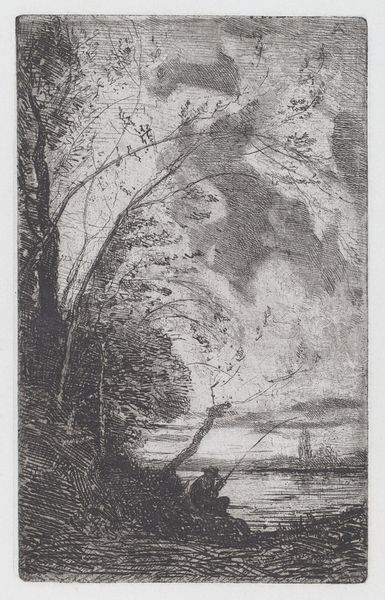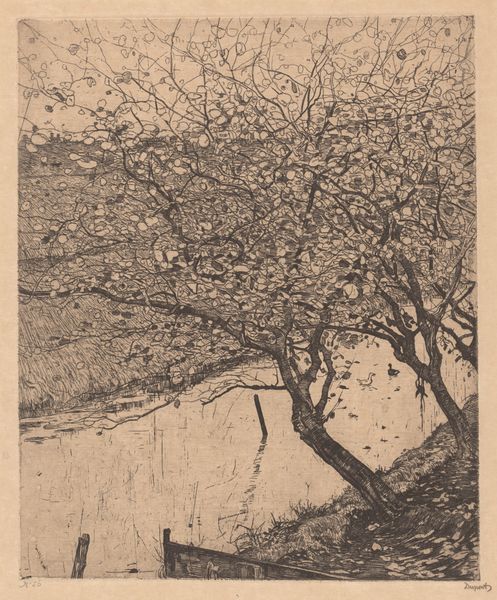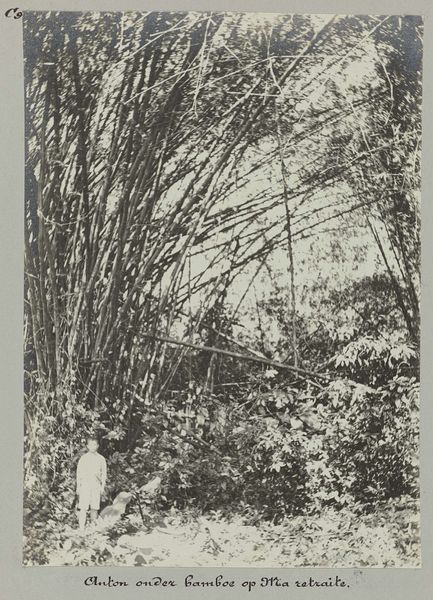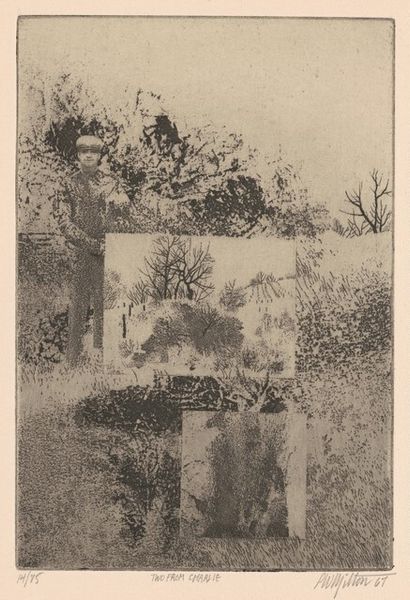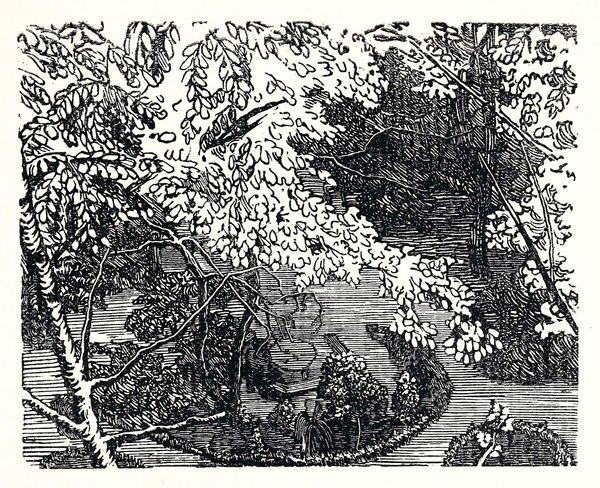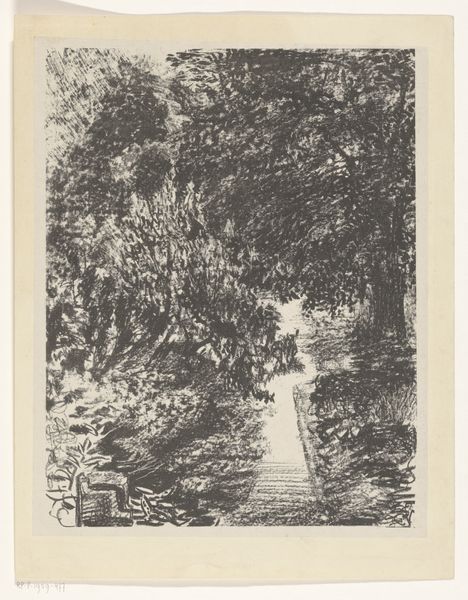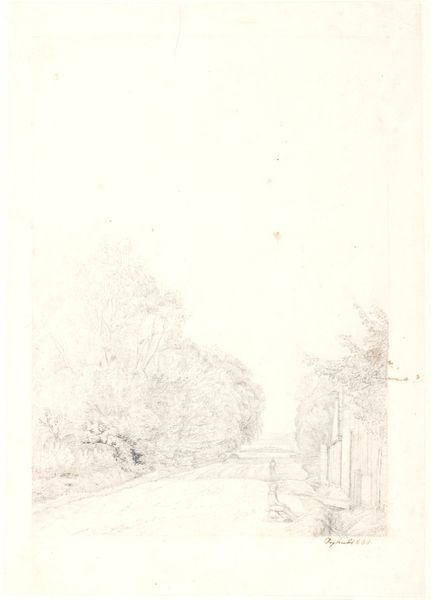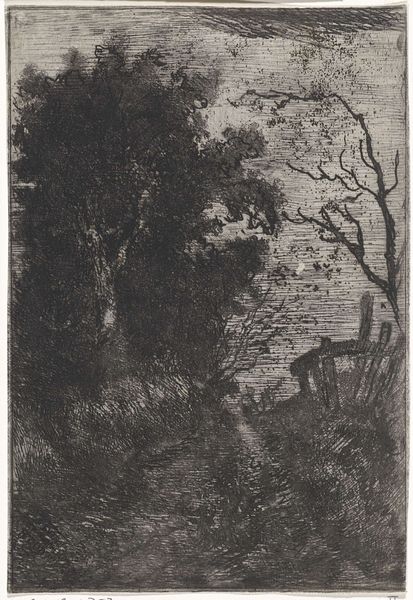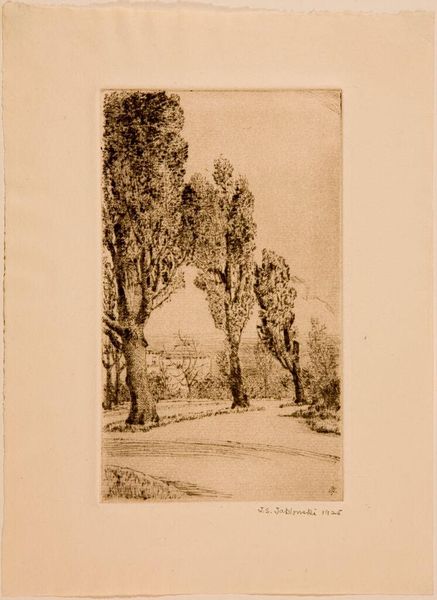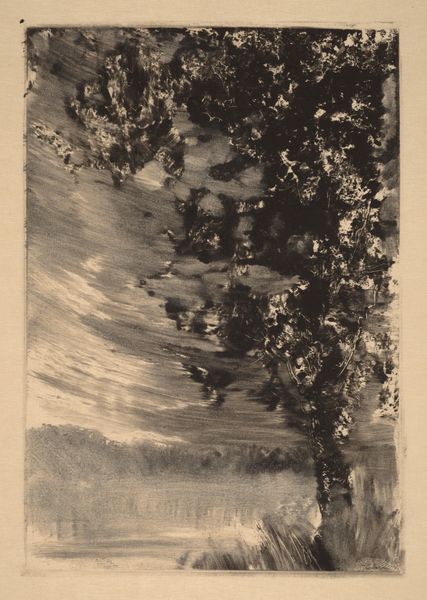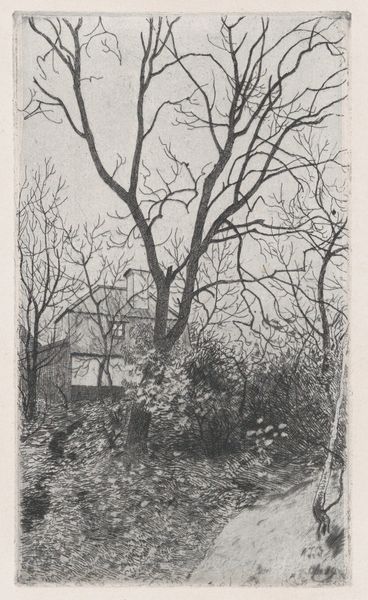
Copyright: Public domain US
Editor: So, this is "In the park. Poplar trees." by Anna Ostroumova-Lebedeva, a woodcut print from 1902. The stark monochrome gives it such a dramatic, almost unsettling feeling, even though it’s a landscape. What are your first thoughts? Curator: It's interesting you find it unsettling. For me, it evokes a certain… unease, certainly, but also a fascination with the changing role of public green spaces at the turn of the century. Ostroumova-Lebedeva, trained in the Repin workshop, engages with impressionistic notions, but also clearly alludes to photographic styles. Considering the date, how do you see the emergence of photography as a popular medium influencing her choices here? Editor: Well, the stark contrasts, the emphasis on light and shadow, feel almost like a photograph. But a very deliberate, crafted one, you know? Maybe she was responding to the rise of photography by emphasizing the artist's control. Curator: Exactly! The woodcut medium allows for that precise control over the image, especially compared to the relative immediacy of photography. Also consider, who was the public for this kind of print? Was it accessible, in terms of cost and availability, to a wide audience, or targeted at more affluent collectors? Editor: I hadn't thought about the audience... I imagine it would have appealed to a cultivated, possibly bourgeois, sensibility, someone with an appreciation for both traditional printmaking and modern themes. Curator: Precisely. So, how does the choice of subject, a park, interact with that audience’s social standing and expectations? Parks are traditionally thought of as spaces of social equalization. Is this idyllic representation consistent with the park's reality? Editor: That is an excellent point. Considering it now, I realize that such green spaces would also symbolize social divisions, which could affect my perception and add a somber touch to this landscape. Curator: Precisely. These parks often catered differently to diverse social classes, thereby underscoring societal inequalities rather than erasing them. Editor: So, understanding the context shifts my reading completely! It makes me appreciate her work on a much deeper level. Thank you for all the insights. Curator: My pleasure. It is so useful to understand art as tied to the forces that created the image and the society it represents, it brings so much meaning.
Comments
No comments
Be the first to comment and join the conversation on the ultimate creative platform.
